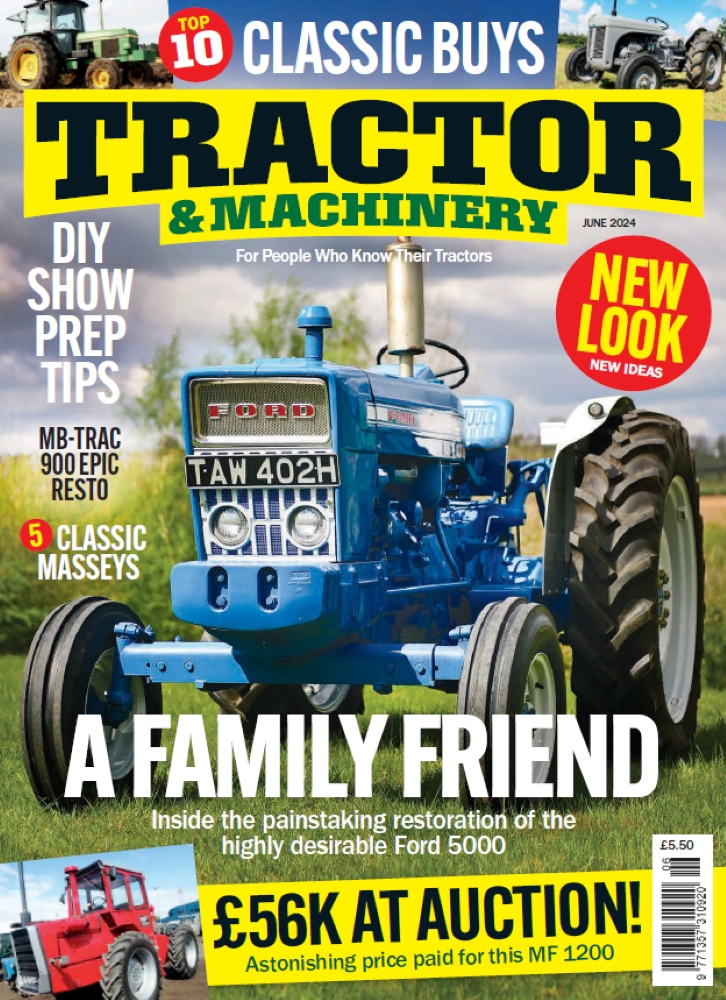A superbly-restored, 1972 Massey Ferguson 148
Posted by Chris Graham on 16th September 2024
Chris Graham heads to Scotland to sample Bob Allan’s superbly restored and now pristine, 1972 Massey Ferguson 148.

Bob Allan’s 1972 MF 148 looks absolutely superb, following its one-year, spare-time restoration.
In Massey Ferguson circles, it’s the MF 135 that tends to grab all the headlines. It was the standard-bearer within the ‘Red Giant’ 100 Series range that burst onto the scene in 1964, and the model enjoyed phenomenal sales success across the world. It truly was a sweet-spot tractor that offered just about the perfect combination of size, power output and purchase price. Farmers flocked to buy it, with good reason; it was a superb machine.
But, as is always the case when any star performer ‘brings the house down’, those that are tasked with continuing the show tend to find the going decidedly tough. In the MF 135’s case, that ominous responsibility fell upon the shoulders of the MF 148, which Massey Ferguson introduced in 1971. The new model arrived as part of the company’s mid-life model refresh of its 100 Series, in which the MF 135, 165 and 175 all got upgrades and a change of name.
Bigger and better
The Red Giants range revamp resulted in the introduction of the ‘8’ line models. These were promoted by Massey Ferguson as the Deluxe Red Giants, and were also sometimes referred to as the ‘Super Spec’ models. Each of the three new models – the 148, 168 and 188 (replacing the Perkins-engined 185) – offered a long wheelbase and more power than its predecessor although, outwardly, everything looked much about the same. Understandably, Massey Ferguson was reluctant to meddle with the overall look of the tractors that had been such a sales smash.

The MF 148 was a significant upgrade over the MF 135 it replaced although, outwardly, the two models looked much about the same.
In keeping with the other two models, the MF 148 came as standard with a 12-speed Multi-Power transmission, although a new eight-speed gearbox was introduced as an optional alternative. The model was built both at the French factory in Beauvais and at Banner Lane, in Coventry, and was powered by a slightly uprated version of the 135’s Perkins three-cylinder AD3.152 motor. A redesigned cylinder head and improved fuel injection system boosted power output from 45.5 to 49hp.
Other enhancements for the new model included some beefing-up at the back end. The rear axle was made stronger, as was the rear linkage, making the tractor better able to cope with the increasingly heavy implements of the time. Nevertheless, despite these significant advantages, the MF 148 never quite captured the market’s imagination as the 135 had. Consequently, when we fast-forward 50-odd years to the present day, we find that the MF 148 is dramatically outnumbered by the 135 in preservation circles. Go to any show and you’ll find rows of gleaming, beautifully-restored 135s being exhibited, but hardly a 148 in sight.
Of course, the greater number of 135s still in circulation helps stoke the model’s popular appeal among enthusiasts. There’s a buoyant market for the tractor and values are certainly on the up, with pristine examples fetching impressive money these days. But, for those who prefer a more unusual alternative, the MF 148 certainly offers an interesting, arguably more accomplished and certainly much rarer option for less money.

Bob’s given his tractor very little use since the restoration was finished. He’s reluctant to do anything that’ll risk spoiling the way it looks.
Superb example
Bob Allan, who lives near Stirling, in Scotland, is a classic tractor owner who includes an MF 148 among his eight-machine collection. It’s a superbly-restored example, as you can see in the photographs here, but it’s only comparatively recently that the transformation has been completed, as Bob explained to me as we sat drinking coffee in his tractor shed.
“I grew up on a farm here in Scotland and was surrounded by Ferguson and Massey Ferguson tractors during that time,” he told me. “Although I remember my grandfather running a Nuffield – and I still have a soft spot for that make as a result – it’s always been the red and grey machines that interest me most. The first tractor I drove was the farm’s grey Fergie, and I’m still attached to that model as a result.”

All the tractor’s original instrumentation remains present, correct and working.
Bob continued: “I worked on the farm until I was 21, but then fancied a change. So I left to become a lorry driver, and worked initially driving concrete mixers for four years during the late 1970s. Then, as the company started to expand, I moved onto bulk tippers and followed this with a spell driving powdered cement tankers. After that I moved to a whisky haulier, and that’s where I remained for 31 years, until retiring recently.”
Obviously, Bob had been interested in tractors for most of his life, although he wasn’t in a position to buy a machine of his own until about 1990. It was a grey Fergie,” he recalled, “and, in those days, I was involved with a group of enthusiasts in West Perthshire and we started a tractor club. I restored that Fergie with a friend, Allan Bain, then sold it to the club, and it was given away as a raffle prize. I also had a David Brown Cropmaster for a while, but that got sold, too.”
Expert assistance
“I wasn’t very experienced with restoration in those days,” Bob added, “and relied a lot on Allan, who was a Massey Ferguson-trained technician and very knowledgeable. I used to get him to do the bulk of the technical work on my early tractor projects. I was perfectly happy tackling the routine tractor servicing and maintenance jobs, but I preferred to leave the specialist stuff to those who really knew what they were doing.”
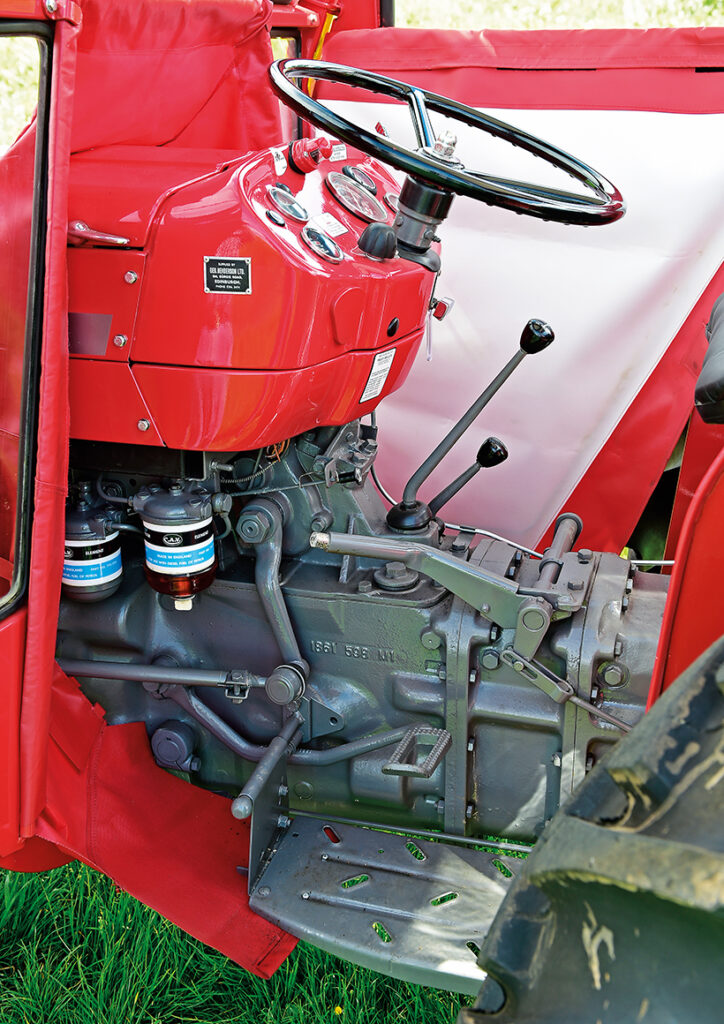
Everything was stripped back to bare metal, primed and painted in the correct colours. The standard of finish and attention to detail are first class.
The MF 148 arrived with Bob about 10 years ago. “I bought it from a chap in Stirling who used to deal in old tractors. I knew nothing about it, but was told about it by a friend who’d seen that it was for sale and thought I might be interested.
“I’d not been looking especially for a 148 but, as a 100 Series fan and knowing that there weren’t too many of that model around, it didn’t take me long to decide to buy it. Initially I actually shared the purchase with a friend called Willie Moore, and we bought the tractor between us. It cost us £2,300 and our first move was to get it to Allan Bain so that he could give it the once-over.

The Perkins three-cylinder diesel engine was completely stripped and fitted with new cylinder liners, pistons and rings.
“However, it must have sat in his workshop for four or five years, at which point he changed premises and took the 148 with him to his new workshop, where it sat for another three years! By this stage, Willie had opted to buy an MF 135 from his father-in-law, so I bought his share of the 148. Once it was mine I decided that progress needed to be made and, given that it seemed to be in reasonably usable condition, I collected it from Allan’s workshop with a plan to start using it.
“I decided to give it a test and booked myself in for a local working day, but things didn’t go well. I hadn’t been going long before the crown wheel and pinion started breaking up inside the rear housing which, in turn, damaged the hydraulic Multi-Power pump and the drive shafts. So that was the end of that. The tractor was banished to my shed where it sat, awaiting diagnosis and repair, for about a year.”

Sensibly placed glass panels give an excellent view of the front wheels, allowing the tractor to be placed precisely.
A hard life
Bob knew nothing about the 148’s working life, other than that it had been on a farm at Linlithgow, in West Lothian, for a period of time. “According to the counter, it’s run for just over 5,700 hours and, although I assume that’s a genuine figure, I have no clue about the sort of work it tackled, or how it was treated,” he explained. “However, the rigid cab that it was originally fitted with was in a very poor state, and the fact that the rear axle all but disintegrated, I think points to some hard use back in the day.”
It’s only in the past three years that Allan really started to get serious about the tractor’s condition, and that’s when the decision was taken to embark on the restoration. “I wanted to do a thorough job, so began by stripping the machine completely,” he said. “Everything that could be was sand-blasted back to bare metal. Amazingly, although there had been plenty of surface rust to be seen, once all that was removed, I found that the whole thing was in pretty decent condition. In fact, none of the tinwork had rusted through at any point, and I was able to keep most of the original components, which is good.

The 148’s back end was beefed-up compared to the MF 135, allowing it to manage heavier implements more effectively and reliably.
“Just about the only thing that’s not original is the cab,” Bob continued. “The one that came with the tractor was in a terrible state; it was shot to pieces. The roof had gone and the doors were badly bent, so it had obviously been treated very poorly. I replaced the old cab with a Sirocco frame that I bought from a seller in Devon, and the PVC covering material was supplied by Cab Parts Interiors Ltd, in Powys.”
The engine got the full treatment, too. “It was completely stripped and fitted with new cylinder liners and pistons. Thankfully, the crankshaft was good enough to be re-used, without the need for any machining.”

Now retired, Bob Allan has more time to spend with his eight-tractor collection.
Wiring and instruments
“A new wiring loom needed to be fitted as the original had been cut about quite badly, but this was a pretty straightforward job as it’s not a very complicated system. All the original dashboard gauges were fully functional, so I was pleased to be able to retain those. However, new front lights were needed as the originals were badly damaged.
“The brakes aren’t the greatest, certainly by modern standards but, following a full system refurbishment, they work well enough stop the tractor. Having shot-blasted and repainted the wheel rims, I bought a new set of front and rear tyres from the British Rubber Company, and they make a big difference to the overall look.”
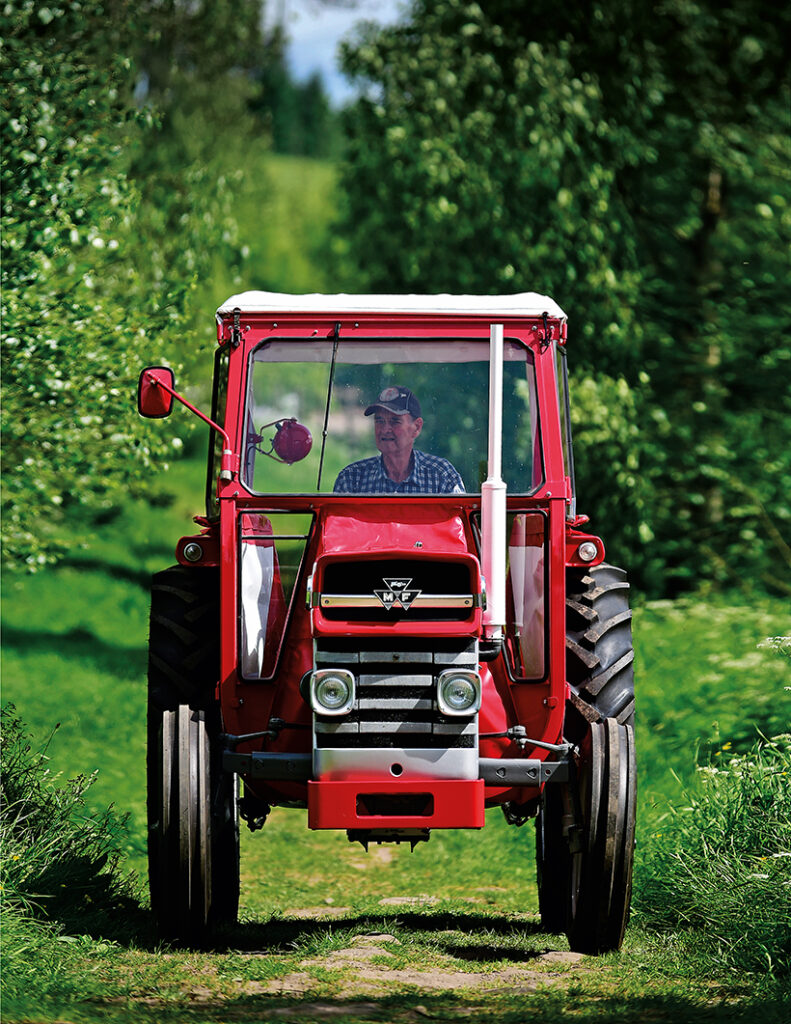
New tyres all round, from the British Rubber Co., contribute to the smart, crisp appearance of this underrated Massey Ferguson model.
The 148’s first outing was to Tractor World at Malvern in February this year following the restoration which, Bob reckons, took about a year to complete. “It wasn’t continuous work, of course,” he explained, “and had to be fitted in around my work commitments and the rest of normal life. Essentially, the time
I had spare to work on the project was confined to weekends.
“Since the tractor’s been finished, though, I have to admit that I’ve done very little with it. It’s probably only run for a few hours in the past year, and hasn’t been used in earnest. To begin with I was very keen to preserve the level of finish that I’d achieved, and so reluctant to do anything that might jeopardise its appearance. I’m lucky to have a number of other machines that I’m able to use on road runs and working days.”

The original cab had been badly abused and had to be scrapped. However, virtually everything else on this tractor is original.
It’s clear that Bob remains determined to preserve the 148 in its immaculate, freshly-restored condition, and that he gets enormous satisfaction from owning such a pristine example. Having said that, more recently he was tempted out with the tractor and attended a local summer show at Gargunnock, near Stirling. “The tractor was well received there and won the Best Restored tractor award, which I was delighted about.”
I can fully appreciate Bob’s desire to keep his restored MF 148 in the best condition possible, especially given all the time and effort that he’s put into the tractor’s renovation. Fortunately, he has a number of other machines, some of which remain in original, unrestored condition, that he’s able to use without qualms. So he’s under no pressure to put the 148 at risk. However, I can’t help feeling that, as a tractor enthusiast, there will be a desire in the back of Bob’s mind to spend time behind the wheel of his creation, to put it through its paces and to confirm that all the care and attention he’s lavished on the project has resulted in a tractor that’s capable of operating as its designers intended.
This feature comes from the latest issue of Tractor & Machinery, and you can get a money-saving subscription to this magazine simply by clicking HERE
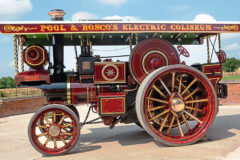
Previous Post
Superb 1909 Burrell showman’s returns at Llandudno
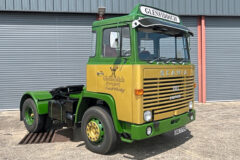
Next Post
Previewing Tony McGovern’s dispersal sale



